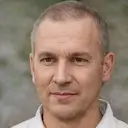How to Write a Documentary Treatment: A Complete Guide
Documentary filmmaking is both creative and strategic. If you're a filmmaker seeking funding or collaborators, you'll need a well-crafted documentary treatment. This document is essential to attract financial backers, interview participants, and collaborators. In this guide, you'll learn what a documentary treatment is, how to structure one, and why it matters for your project.
What Is a Documentary Treatment?
A documentary treatment is a written overview of your film project. Treatments usually range from two to ten pages and summarize the core idea, objectives, and details that make your documentary unique. Financial backers, team members, and other stakeholders use this document to see your vision and decide whether to participate.
- Acts as a roadmap from concept to finished project
- Helps you organize your narrative and develop ideas
- Demonstrates the project's feasibility and potential
Key Elements of a Documentary Treatment
Every successful documentary treatment includes these five elements:
- Logline: A single compelling sentence that summarizes the documentary and hooks the reader.
- Proposal: Details the project plan, team bios, budget, treatment, and a distribution outline for stakeholders.
- Synopsis: A concise, engaging summary of the documentary, introducing main subjects and the story’s premise.
- Tagline: A catchy line used for marketing, often featured on promotional materials.
- Treatment Body: Outlines the journey of main subjects, key scenes, interviews, and overall narrative approach.
Why Each Element Matters
- Logline: Sparks initial interest (think of award-winning documentary loglines).
- Proposal: Offers a clear business plan and supports funding decisions.
- Synopsis: Provides enough detail to display the uniqueness and structure of your documentary.
- Tagline: Simplifies marketing and brand development.
- Treatment Body: Lays out the main narrative and logistical plan.
The Importance of a Documentary Treatment
Writing a documentary treatment helps you clarify your vision and plan every phase of the project. It not only assists with organizing your ideas, but also convinces others to join, fund, or support your documentary.
- Helps describe your goals and message
- Defines a clear plan for production and distribution
- Aligns your team on story and logistics
- Lists technical requirements for shooting and editing
Without a treatment, you might encounter problems during production. The treatment sets interview objectives, identifies key scenes, and guides your project from concept to completion.
Ideal Length for a Documentary Treatment
There are no strict rules for the perfect length. In general:
- Engaging treatments are often about ten pages
- The length should match the expectations of your target audience or production partners
Before submitting, confirm with the recipient if they require a specific length or format.
Step-by-Step: How to Write a Documentary Treatment
Think of your treatment as telling the story in the present tense, highlighting the project's tone and key elements. Here’s how you can create an effective treatment:
- Start with the documentary’s working title.
- Add your name and contact details.
- Summarize the premise using a strong logline.
- Describe Act One: Introduce the main subjects, setting, and tone.
- Outline Act Two: Present the conflicts, obstacles, or changes the subjects face.
- Describe Act Three: Show the climax and how the story reaches resolution.
- Conclude by showing where the documentary leaves the subjects and what the audience takes away.
You don't have to cover every subplot—focus on the main story and central subjects.
Tips for an Effective Documentary Treatment
- Use the Present Tense and Active Voice: Make your words come alive by describing events as they happen.
- Be Specific: Detail your subjects, settings, and conflicts. Avoid vague or generic descriptions.
- Keep It Simple: Avoid jargon. Write in clear language for readers without filmmaking experience.
- Introduce Characters Properly: Present characters in ALL CAPS with their age in parentheses. Example: SAM (32).
- Describe Only What’s Seen or Heard: Focus on visual and auditory elements, not inner thoughts.
Making the Process Easier: Use Transcripts
Accurate transcripts are valuable for tracking progress, capturing dialogue, and updating your documentary treatment. Using transcription services from the start saves time and supports thorough research.
When to Use Transcription in Documentary Production
- Development and Pre-Production: Record project meetings and planning sessions. Transcripts help you focus on discussions and capture every idea.
- Principal Photography: Use transcripts of interviews and focus groups to evaluate audience feedback and identify key moments or quotes.
- Post-Production: Refer to transcripts when editing to ensure accuracy and completeness, or add crucial dialogue to the narrative.
For fast turnaround, GoTranscript’s automated transcription can return texts in as little as six hours, supporting tight documentary schedules.
Additional Help for Filmmakers
As you work through your documentary project, remember you can:
- Order professional transcription services for recorded interviews and meetings
- Use captioning and subtitling to reach global audiences
- Find affordable rates for transcription and captioning services
- Order transcription or order captions online anytime
Conclusion: Make Documentary Treatment Writing Easier with GoTranscript
Writing a compelling documentary treatment takes structure, clarity, and ongoing updates throughout your project. Transcripts make this process manageable and allow you to capture every key insight. From pre-production to final edits, trust GoTranscript’s human-generated or AI-powered transcription services for accuracy and speed. With proofreading, translation, and audio translation options, GoTranscript supports the needs of every documentary filmmaker.



















 Verified Order
Verified Order